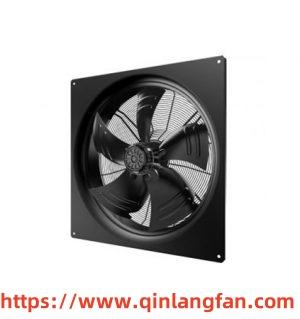In today's industrial arena, Square Axial Fan Manufacturers face increasing competition as companies worldwide seek efficient, durable airflow solutions. Market demands now span from large-scale factories to compact electronic devices, creating pressure for innovation and cost-effective production. Manufacturers must differentiate themselves through precision engineering, material selection, and adaptability to diverse environments. Advanced designs optimize energy efficiency, noise reduction, and durability, allowing fans to operate under varied conditions. Innovation is no longer optional; it defines competitive advantage and determines whether products meet evolving industry expectations.
The competitive landscape reflects a blend of traditional players and emerging innovators. Established manufacturers maintain reliability and brand recognition, while new entrants emphasize rapid development, lightweight materials, and smart control integration. This mixture drives ongoing improvements across the sector. Companies now consider not only airflow performance but also long-term stability, adaptability to regulatory standards, and integration into complex systems. By addressing these factors, manufacturers can offer solutions that appeal to diverse industrial customers, from HVAC and data centers to laboratory and electronics applications.
Diverse applications have reshaped how fans are designed and marketed. Industrial air management extends beyond basic cooling, encompassing precise temperature control, dust reduction, and acoustic management. Small-scale applications require compact, efficient designs capable of fitting into limited spaces without sacrificing performance. Conversely, large facilities demand high-capacity fans able to handle extensive airflow while maintaining quiet operation. Manufacturers who balance these varied requirements demonstrate versatility and a deep understanding of client needs.
Material selection plays a critical role in performance and market positioning. Corrosion-resistant alloys, reinforced composites, and high-temperature polymers allow fans to operate reliably in harsh environments. These innovations enable applications across chemical plants, electronic enclosures, energy facilities, and manufacturing floors. By offering durable components suited for multiple scenarios, manufacturers can reach broader markets while maintaining operational stability. Adaptable design ensures products meet changing industrial requirements without costly redesigns.
Integration of control systems enhances competitiveness further. Intelligent fans can monitor airflow, vibration, and temperature, adjusting speed automatically to optimize performance. This reduces maintenance needs, minimizes downtime, and enhances energy efficiency. Manufacturers who incorporate smart control into compact and large-scale units provide added value to customers seeking operational reliability and cost savings. The combination of precision engineering, material advancement, and intelligent control positions companies to meet diverse demands effectively.
Global expansion amplifies market complexity. Different regions impose varying energy regulations, efficiency requirements, and noise standards. Manufacturers must design fans compatible with multiple jurisdictions, ensuring consistent performance and compliance. This complexity favors manufacturers who invest in research, testing, and quality control. By aligning products with international standards, companies gain access to wider markets while reinforcing their reputation for reliability and technological leadership.
Emerging trends include modular systems, integration with renewable energy infrastructure, and focus on environmentally friendly operations. Industrial sectors increasingly require solutions that optimize airflow, energy use, and acoustic performance simultaneously. Manufacturers adapting to these trends can capture niches in specialized applications such as precision electronics, cleanrooms, and energy-efficient buildings. Versatility, durability, and adaptive technology define the leading products in the current competitive landscape.
Operational support and service also influence market positioning. Manufacturers offering extended warranties, easy maintenance procedures, and rapid replacement parts strengthen customer loyalty. Providing guidance on installation, system optimization, and regulatory compliance ensures that buyers can maximize performance and lifespan. Companies that combine innovation with robust after-sales support maintain competitiveness and customer trust.
In this landscape, Qinlang demonstrates leadership by offering airflow solutions that blend innovation, adaptability, and durability. Its designs reflect careful attention to structural integrity, material resilience, and intelligent performance control, enabling operation across diverse industrial applications. By combining advanced engineering with flexible deployment, Qinlang exemplifies how modern Square Axial Fan Manufacturers can thrive in competitive markets while meeting the demands of varied industries.visit https://www.qinlangfan.com/product/axial-fan/square-blinds-axial-fan/



